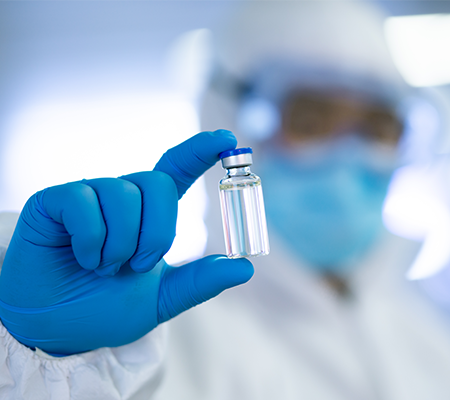
Editor’s note: This article was published on January 6, 2021. COVID-19 information and recommendations are subject to change. For the most up-to-date information, visit the Centers for Disease Control and Prevention (CDC) website or view our most recent COVID-19 blog posts.
Now that COVID-19 vaccines have been deemed safe and are approved for emergency use authorization by the Federal Drug Administration (FDA), researchers are continuing to monitor the vaccine to make sure nothing changes.
This important research will add to the data from the clinical trials that have already deemed the COVID-19 vaccines safe after being provided to more than 30,000 participants.
There have been reports of rare, but serious allergic reactions occurring immediately after receiving the vaccine. These cases are being investigated. CDC currently recommends that people with a past history of severe allergic reaction after vaccination or injectable medication should talk to their doctor before getting the vaccine.
In the clinical trials, no additional safety concerns were found eight weeks after completing vaccination, providing a high level of confidence in vaccine safety.
Pain at the injection site is common and many people develop symptoms such as fatigue, headache, chills and muscle aches. These are mild to moderate in most people and typically resolve after 1-2 days. Lymph nodes may also become swollen and tender on the same side as the injection. These side effects occur because the immune system is responding normally to the vaccine. In general, these side effects are more severe after the second dose, and they may be less severe in older adults.
“It is possible that a rare vaccine-related problem could occur with longer follow-up in larger groups, and there are several monitoring systems in place to make sure any safety issues are quickly found and investigated,” said Dr. Edward Belongia, center director for the Center for Clinical Epidemiology and Population Health at Marshfield Clinic Research Institute.
Monitoring the vaccines for safety
The Immunization Safety Office of the Centers for Disease Control and Prevention (CDC) oversees four vaccine safety activities including the:
- Clinical Immunization Safety Assessment, which is a partnership between CDC and several U.S. medical centers that conduct clinical research on vaccine-associated health risks.
- Emergency Preparedness for Vaccine Safety, which is activated by the CDC in the event of a disease outbreak, to ensure that vaccines remain safe in the outbreak setting and during mass distribution.
- Vaccine Adverse Event Reporting System (VAERS), which is an early warning system that helps CDC and FDA monitor problems following vaccination. Anyone can report suspected vaccine reactions and issues to VAERS.
- Vaccine Safety Datalink (VSD), which is a collaboration between CDC and several health care organizations that allows for ongoing monitoring and pro-active searches of vaccine-related data. VSD will monitor both the effectiveness and safety of approved COVID-19 vaccines.
“These networks have been doing this research for many years, so they are accustomed to delivering answers to the public about the safety and effectiveness of vaccines quickly and efficiently,” said Dr. Thomas Boyce, pediatric infectious disease doctor at Marshfield Children’s and clinician researcher at Marshfield Clinic Research Institute. “This method was created to provide confidence to the public that the vaccines they receive are safe and that they work.”
Tracking COVID-19 vaccine safety
Some doctors call this type of research phase IV trials, but these large studies will be conducted on the newly-approved COVID-19 vaccines to look for rare side effects in specific populations.
The Vaccine Safety Datalink uses electronic health data from each participating site to conduct vaccine safety research after a vaccine is licensed or authorized for emergency use. In addition to CDC, the Vaccine Safety Datalink includes Harvard Pilgrim, Marshfield Clinic Research Institute, Health Partners Minnesota and five Kaiser Permanente sites (Colorado, Southern and Northern California, Oregon and Washington).
“This group of health care organizations brings together data from more than 12 million children and adults in the U.S.,” Dr. Boyce said. “We use the Datalink to monitor vaccine safety over time as well as with rapid cycle analysis to find safety issues in near-real time. Data used by the Datalink include outpatient, inpatient, emergency department and immunization data. It can find new safety concerns and confirm safety concerns from other sources such as the Vaccine Adverse Event Reporting System.”
For more information about the safety of the COVID-19 vaccine, talk to your doctor.
Related links
Vaccine development: A primer on the process and timeline






Leave a Reply